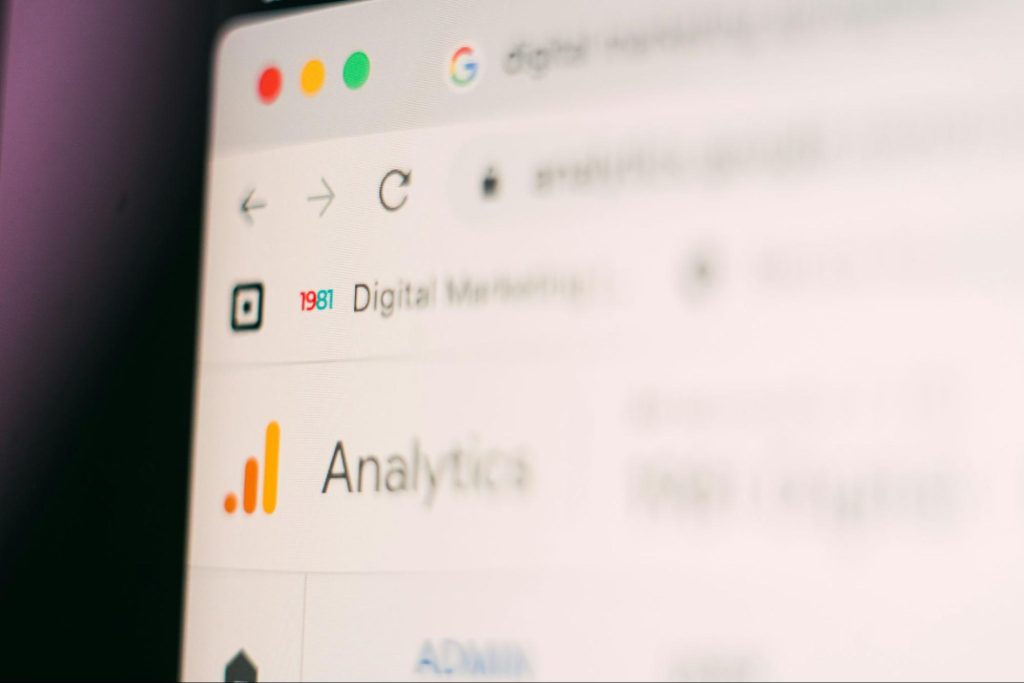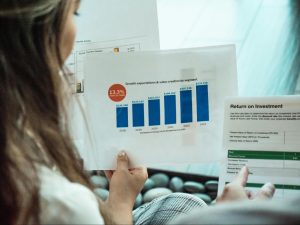In this article, we’ll explain link building ROI, why it’s often tricky to measure, and how we can track the true value of our efforts.
We’ll look at:
- How to calculate ROI using a simple formula
- Real examples to make the math easy to follow
- What should be included in our “returns” and “investment”
- The key metrics we should monitor
- Tools we can use to track progress
- Common mistakes marketers make when measuring ROI
You’ll also learn how ROI from link building changes over time and how to align it with broader business goals.
Whether working in-house, running an agency, or managing a freelance SEO project, understanding ROI enables us to make smarter decisions and deliver results that matter.
If you want to make your link building work harder, last longer, and drive actual growth, this guide is for you.
What is Link Building ROI?
Link building return on investment (ROI) is the measurable value you receive in return for the time, money, and resources invested in acquiring backlinks to your website.
It’s a way to determine if your link building efforts are actually worth it.
Why it matters for SEO and business growth

Link building isn’t just about getting more links; it’s about growing your business. Strong backlinks enhance your website’s authority, resulting in improved search engine rankings.
When you invest in link building, you need to know if it’s paying off. Without tracking ROI, we’re left to guess whether our efforts are practical or not.
For business owners and marketing teams, understanding link building ROI helps to:
- Justify budget allocation to SEO activities
- Make smarter decisions about which tactics to pursue
- Show the real business impact of SEO work
- Compare link building to other marketing channels
Why Link Building ROI is Challenging to Measure
Attribution difficulties
One of the biggest headaches with measuring link building ROI is figuring out which links drive results.
When organic traffic increases, how do we know which links deserve the credit?
Unlike paid ads, where we can easily track clicks from specific campaigns, backlinks work together in complex ways to build your site’s authority.
Time lag between link acquisition and results
Link building is not an overnight strategy.
When we secure an excellent backlink today, we typically won’t see results tomorrow.
Search engines can take several weeks or even months to recognize and credit new backlinks fully. This delay makes it challenging to connect specific link building efforts to business outcomes.
Thankfully, we have tools like Link Building Pricing that are designed to help you quickly determine the current market price of backlinks, making it easier to understand the investment side of the ROI equation.
Influence of external factors
The SEO landscape never stays still.
Google updates its algorithm a couple of hundreds of times yearly, and your competitors are constantly developing their own link building strategies, too.
These external factors can mask the true impact of your link building efforts:
- Algorithm updates might boost or tank your rankings regardless of new links
- Competitors gaining or losing backlinks can affect your relative performance
- Seasonal changes in search behavior can impact your results
How to Calculate Link Building ROI

The basic ROI formula
The formula for calculating ROI is straightforward:
ROI = (Gain from Investment – Cost of Investment) / Cost of Investment × 100%
For link building, this translates to:
Link Building ROI = (Revenue Generated from Link Building – Link Building Costs) / Link Building Costs × 100%
A positive percentage indicates that your link building is profitable.
For example, a 200% ROI means you’re making $2 for every $1 you spend.
What counts as “return”
The “return” part of ROI can include several link building metrics:
- Traffic Value: The estimated cost if you had to pay for the same traffic through PPC ads.
- New Revenue: Actual money earned from customers who found you through organic search after your rankings improved.
- Conversion Value: The value of leads, sign-ups, or other conversion actions from organic traffic.
We recommend focusing on revenue or conversion value, as these tie directly to business outcomes.
What counts as “investment”
Your link building investment typically includes:
- Labor Costs: Hours spent by your team on link building activities × hourly rate
- Content Creation: Costs to create linkable assets like blog posts, guides, or tools
- Outreach Tools: Subscription costs for email outreach platforms and SEO tools
- Agency or Freelancer Fees: Payments to external partners who help with link building
Example calculation with hypothetical numbers
Let’s walk through a simple example:
Investment:
- Content creation: $2,000
- Outreach labor (40 hours at $30/hour): $1,200
- SEO tools: $300
Total investment: $3,500
Return (over 6 months):
- New organic traffic: 5,000 visitors
- Conversion rate: 2%
- New customers: 100
- Average customer value: $150
Total return: $15,000
ROI Calculation:
ROI = ($15,000 – $3,500) / $3,500 × 100% = 328.6%
In this example, every dollar spent on link building returned $4.29 in revenue ($1 original investment + $3.29 profit).
Key Metrics for Measuring Link Building ROI

Organic traffic growth
An increase in organic traffic is one of the clearest signals of link building success. After building high-quality links, we should see an increase in visitors coming from search engines.
To measure this properly:
- Track organic traffic before and after link building campaigns
- Look at growth for specific pages you’ve built links to
- Compare your traffic growth to seasonal trends and industry averages
Keyword rankings
Higher-quality backlinks should result in improved rankings for your target keywords. Tracking these position changes helps you determine if our link building efforts are effective.
Key things to monitor:
- Rankings for primary keywords you’re targeting
- Total number of keywords ranking in the top 10 positions
- Movement of keywords from page 2+ to page 1 of search results
Domain authority/Domain rating
Domain-wide metrics, such as Moz’s Domain Authority (DA) or Ahrefs’ Domain Rating (DR), help us understand our site’s overall link strength in comparison to competitors.
While these aren’t Google metrics, they provide useful benchmarks for tracking progress and comparing your site to those of your competitors.
Referral traffic
Good backlinks don’t just improve SEO—they can send direct visitors through clicks. This “referral traffic” is a bonus benefit of link building.
Some links may not yield significant SEO value, but they can still drive valuable direct traffic. Don’t overlook this benefit when calculating ROI.
Conversion rates and revenue attribution
Traffic alone doesn’t pay the bills—we need visitors who take action.
Tracking how organic visitors convert helps us understand the true value of our link building.
The ultimate measure of link building ROI is revenue.
By connecting organic traffic improvements to actual sales, we can show the real business impact of our work.
Factors Affecting Link Building ROI
Link quality vs. quantity
Not all links are created equal. A few high-quality backlinks from trusted sites can drive more value than dozens of low-quality links.
Factors that determine link quality:
- Authority of the linking domain
- Relevance to your industry or topic
- Placement within content (not hidden in footers)
- Whether the link is followed or nofollowed
- Traffic and engagement levels of the linking page
Focus on acquiring fewer, better links rather than chasing large numbers of weak backlinks.
Relevance and authority of linking sites
Backlinks from websites closely relevant to your niche or industry carry more weight than random backlinks. Search engines use relevance as a key factor when evaluating the quality of links.
For maximum SEO ROI, target links from:
- Industry publications and blogs
- Complementary business websites
- Topic-specific resource pages
- Sites that share your audience
Content quality and on-page optimization
Even the best backlinks won’t fix poor content.
Links drive visitors to your pages, but what they find there determines whether they stay, convert, and return.
To maximize link building ROI:
- Ensure linked pages fully satisfy visitor search intent
- Optimize page speed and user experience
- Include clear calls-to-action
- Regularly update content to keep it fresh
Industry competitiveness
Some industries are more competitive than others.
In highly competitive spaces, you’ll need more and better links to see the same backlink ROI.
Adjust your expectations and link building strategy based on competitive analysis. Patience and persistence are essential in demanding industries.
Short-Term vs. Long-Term ROI
What to expect in the first 3, 6, 12 months
Link building is a marathon, not a short sprint. Setting realistic timeframes helps manage expectations about when you can expect to see returns.
| Timeframe | Expected Outcomes | Key Metrics to Watch |
| First 3 Months | Small improvements in DA/DR, ranking gains for less competitive keywords. | DA/DR, keyword rankings |
| 3-6 Months | Noticeable ranking improvements, beginning of organic traffic growth. | Keyword rankings, organic traffic |
| 6-12 Months | Significant ranking improvements, steady organic traffic growth, and reliable conversions. | Keyword rankings, organic traffic, conversions/revenue |
How ROI compounds over time
The beauty of link building is that it builds on itself.
The ROI of your efforts typically increases over time rather than diminishing.
Why link building ROI compounds:
- Links continue working for you long after the acquisition
- Domain authority grows exponentially as you pass thresholds
- Higher rankings lead to more brand visibility and natural links
- Improved positions mean more clicks without additional link building costs
This compounding effect means link building often becomes more cost-effective the longer you consistently do it.
Tools and Software for Tracking Link Building ROI

Google Analytics, Google Search Console
These free tools from Google provide essential data for measuring link building impact:
Google Analytics:
- Track organic traffic growth
- Measure user engagement metrics
- Set up conversion tracking
- Create custom reports for link building ROI
Google Search Console:
- Monitor keyword ranking positions
- See which pages are gaining search visibility
- Identify links Google has discovered
- Track click-through rates from search results
SEO platforms (Ahrefs, SEMrush, Moz)
Paid SEO platforms provide more comprehensive data for serious link builders:
- Track your backlink profile growth
- Monitor domain rating progress
- Research competitor backlinks
- Estimate traffic value of rankings
- Track rankings for hundreds of keywords
- Analyze organic traffic cost equivalent
- Monitor position changes after link building
- Track share of voice in your industry
Moz:
- Monitor domain authority growth
- Track page authority for specific URLs
- Analyze link quality metrics
- Compare link profile to competitors
Custom dashboards and reporting tools
For more advanced tracking, consider setting up custom dashboards that bring all your data together:
Google Data Studio:
- Create visual ROI dashboards
- Combine data from multiple sources
- Automate regular reporting
- Share live results with stakeholders
The Role of Content Quality in Link Building ROI
Why content matters as much as links
Links point to content. If your content doesn’t deliver value, your link building ROI will suffer regardless of how many backlinks you acquire.
High-quality content:
- Keeps visitors engaged once they arrive
- Encourages conversions
- Earns additional natural backlinks
- Builds brand authority
Think of content as the foundation and links as the amplifiers. Both must work together for maximum ROI.
Types of content that attract high-ROI links
Some content formats naturally attract more valuable backlinks:
- Original Research and Data: Publishing unique statistics or survey results that others want to cite
- Comprehensive Guides: Creating the definitive resource on a topic that becomes the go-to reference
- Visual Assets: Developing infographics, diagrams, or tools that others want to share
- Expert Interviews: Featuring industry leaders whose audiences will link to their appearances
Investing in these content types can dramatically improve your link building ROI by making outreach easier and encouraging natural links.
Common Mistakes and Pitfalls
Focusing on low-quality links
One of the biggest ROI killers is chasing quantity over quality.
Low-quality links from irrelevant or spammy sites rarely drive meaningful results and can even hurt your site.
Signs of low-quality link focus:
- Prioritizing link numbers in reports over quality metrics
- Using automated link building tools
- Participating in link exchanges or networks
- Measuring link building success by raw backlink counts rather than outcomes
Ignoring attribution and tracking
Without proper tracking, it is impossible to calculate ROI accurately.
Many marketers make the mistake of building links without setting up systems to measure their impact.
Set up your measurement framework before building links, not as an afterthought.
Overestimating short-term gains
Link building is a long-term strategy, but many marketers expect immediate results. This misalignment of expectations often leads to abandoned campaigns before they have a chance to demonstrate their true ROI.
Avoid these short-term thinking traps:
- Stopping campaigns after just 1-2 months
- Frequently changing strategies before seeing results
- Comparing link building ROI to immediate-return channels like PPC
- Promising stakeholders quick wins from link building
How to Maximize Link Building ROI
Targeting high-authority, relevant sites
Not all backlinks are created equal.
To maximize ROI, focus your efforts on sites that will drive the most value:
Priority targets should have:
- High domain authority/rating
- Strong relevance to your industry
- Active, engaged audiences
- Editorial standards that favor quality content
- Potential for driving both SEO value and referral traffic
A single link from a perfect-fit website can outperform dozens of mediocre backlinks while taking less effort to acquire.
Creating linkable assets
The content you use for link building has a significant impact on your success rate and ROI. Develop assets specifically designed to attract links.
Effective linkable assets include:
- Original research with compelling data points
- Comprehensive, definitive guides on essential topics
- Free tools and calculators that solve everyday problems
- Unique visuals that explain complex concepts
Creating content that naturally attracts links reduces outreach costs and increases your success rate.
Continuous monitoring and optimization
Link building isn’t a set-it-and-forget-it activity.
Regular campaign analysis helps you refine your approach for better ROI:
Optimization activities:
- Track which types of content earn the most valuable links
- Identify which outreach approaches yield the best response rates
- Monitor which links drive actual traffic and conversions
- Adjust your strategy based on which efforts show the best return
Integrating Link Building ROI with Overall SEO Strategy
How link building supports broader marketing KPIs
Link building doesn’t exist in isolation.
It should support and be supported by your broader marketing goals:
- Brand Awareness: Links from popular sites increase brand visibility
- Authority Building: High-quality backlinks position your brand as an industry leader
- Content Amplification: Links help your best content reach broader audiences
- Lead Generation: Strategic links can drive qualified visitors directly into your funnel
When link building aligns with these broader objectives, its ROI extends beyond just search rankings.
Communicating ROI to stakeholders
Getting continued buy-in for link building requires effectively communicating its value to decision-makers:
Effective ROI communication strategies:
- Translate SEO metrics into business language (revenue, leads, cost savings)
- Create visual dashboards showing progress over time
- Compare link building ROI to other marketing channels
- Highlight specific case studies of links that drove significant results
Remember that most stakeholders are primarily concerned with business outcomes rather than SEO metrics. So, frame your reporting accordingly.
Actionable Checklist: Measuring and Improving Link Building ROI
Use this step-by-step checklist to ensure you’re on track with measuring and maximizing your link building ROI:
Preparation Phase
- Set clear objectives for your link building campaign
- Define which metrics you’ll use to measure success
- Establish baseline measurements before starting
- Set up proper tracking in analytics platforms
Execution Phase
- Focus on acquiring relevant, high-authority links
- Create and promote linkable assets
- Document all link acquisition costs
- Maintain a detailed record of all acquired links
Measurement Phase
- Monitor ranking changes for target keywords
- Track organic traffic growth to linked pages
- Measure conversions from organic traffic
- Calculate revenue attributed to link building
Optimization Phase
- Identify which link types drive the best results
- Double down on the most effective content formats
- Refine outreach strategies based on response rates
- Adjust resource allocation based on ROI data
By following this systematic approach, you’ll not only accurately measure your link building ROI but also continuously improve it over time.
Wrapping Up
Measuring link building ROI isn’t always straightforward, but it’s essential for making smart marketing decisions.
By tracking the correct metrics, utilizing appropriate tools, and taking a patient, long-term approach, we can demonstrate the real value that quality backlinks bring to our businesses.
Remember that link building is both an art and a science. The numbers matter, but so do the quality of your content and the genuineness of the relationships you build with other websites in your space.
The marketers who succeed with link building ROI aren’t necessarily those with the biggest budgets—they’re the ones who track diligently, learn constantly, and optimize their approach based on real data.


